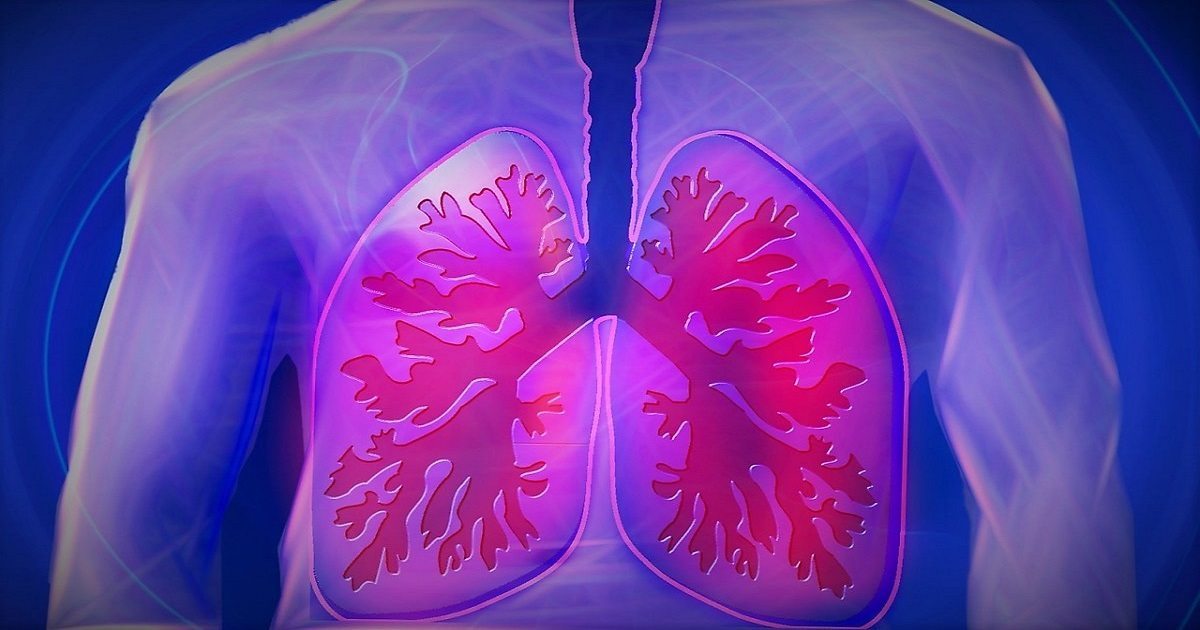Category: Featured News

Creative Scientists May Eventually Find a Simple Way To Monitor Mesothelioma Symptoms
MesotheliomaHelp has covered breakthrough technology that may seem more appropriate for science fiction articles, such as the Qualcomm Tricorder XPRIZE competition to design a handheld device to help diagnose health conditions, than for mesothelioma care. In another seemingly science fiction approach to medical care, scientists report a tattoo with “smart” ink could help monitor chronic health conditions.
Scientists from Harvard and MIT partnered in a “proof of concept” experiment to determine whether biosensitive inks could become a reliable standard as a biomedical monitoring device. The team wanted to find a way to check blood glucose levels, for example, without requiring a skin prick or wires, sensors and batteries, that are needed with today’s devices.
With mesothelioma, an asbestos-caused cancer primarily striking older patients, one issue with managing the disease is the co- conditions from which many of the patients also suffer. According to data, about three out of four people with mesothelioma are older than 65 years, and nearly half them may have medical problems, such as heart disease and diabetes, that also need to be monitored.
In seeking to find the “next generation after wearables,” the researchers determined they could use biosensors directly on the skin. Dubbing the project “Dermal Abyss,” the researchers turned to pig skin for their initial testing. Tattooing the inks onto segments of the skin, the researchers watched as the colors of the ink changed based on biomarkers. In one case, a green ink changed to brown indicating increased levels of glucose. In another, they shined a blue light on a green ink that intensified in color as sodium concentration increased indicating dehydration.
Mesothelioma patients undergoing chemotherapy and radiation are also vulnerable to infection, dehydration and exhaustion from the harsh drugs. Finding a way to more closely monitor these symptoms could help get the patients back on their feet more quickly. Nearly 3,000 Americans are diagnosed with mesothelioma each year.
The researchers point out that this tattoo is still in the very early stages and “The purpose of the work is to light the imagination of biotechnologists and stimulate public support for such efforts,” said Nan Jiang, a postdoctoral fellow at Harvard Medical School and Brigham and Women’s Hospital.
“These questions of how technology impacts our lives must be considered as carefully as the design of the molecular sensors patients may someday carry embedded in their skin,” said Jiang.
Photo Credit: Harvard Medical School

Is It Just A Cough Or Is It Mesothelioma?
Not everyone who has been exposed to asbestos will develop mesothelioma, but it is important to be aware of the symptoms and to know when to contact a doctor. A cough is one symptom that many pleural mesothelioma patients share, yet it can also simply be a cold or the flu. Knowing the difference can impact a patient’s long-term health.
According to a Sept. 18 article in Medical News Today, while coughing is a “protective action” that helps clear the lungs of germs or harmful objects, when the cough lingers, it may be time to take note. Specifically, the authors note, if a cough is associated with coughing up blood or rust-colored phlegm, shortness of breath, or chest pain you should call a doctor.
Mesothelioma is a terminal, asbestos-caused cancer that may not be diagnosed until decades after the patient was first exposed to the carcinogen. Many times the patient will not even realize he or she was exposed to the mineral, and chances are the deadly asbestos cancer is the last thing on a doctor’s mind when trying to understand why their patient cannot get rid of their cough, why their lungs are filling with fluid and why the antibiotics are not helping.
Expert Insight
“A cough that is associated with lung cancer can be either dry or wet. It can occur at any time, and even be so severe that it interferes with sleep at night.”
However, early detection of mesothelioma is critical and can positively influence a patient’s survival by increasing treatment options and improving their quality of life while battling the cancer. An accurate diagnosis that distinguishes between a temporary illness, such as pneumonia, and mesothelioma is critical for ensuring an appropriate treatment plan is established from the onset.
There may be other symptoms that go along with your cough, that should also sound an alarm, such as wheezing or hoarseness of the voice, problems swallowing, loss of appetite, and returning bronchitis or pneumonia.
Mesothelioma can be challenging to diagnose, and often before an accurate diagnosis there are multiple misdiagnoses. It is not uncommon for a diagnosis to take months and many trips to the doctor’s office and even the emergency room. Pleural mesothelioma symptoms can mimic other diseases such as the flu, pneumonia, and other cancers, making it very difficult to diagnose.
If you have been exposed to asbestos in the past and are suffering from a lingering cough, do not hesitate to contact a doctor. Nearly 3,000 Americans are diagnosed with a form of mesothelioma each year.

Mesothelioma Treatment May Come From Discovery of Treatment for “Undruggable” Form Of Aggressive Lung Cancer
MesotheliomaHelp has reported many times on the challenges in treating KRAS-positive lung cancer, one of the most aggressive subtypes of lung cancer. Now, in a new study, researchers report they may have found a way to tackle lung cancer when the KRAS gene is present. This finding could also prove encouraging in the future for mesothelioma treatment.
According to an Oct. 2 press release in MIT News, a team of MIT researchers took a closer look at the Kirsten rat sarcoma virus (KRAS) and homed in on the KEAP1 mutation of KRAS, which, according to the researchers, is the third most frequently mutated gene in lung cancer. They found that in cancer where the KEAP1 gene is “nonfunctioning” cancer cells hunger for glutamine. They determined that if they could cut off the supply of glutamine to the tumors, they could treat both KRAS and KEAP1 mutations.
KRAS-mutated cancers are referred to as “undruggable” due to the inability to successfully target the protein with medicine. However, the MIT researchers began to experiment with suppressing KEAP1 which resulted in over-expression of yet another protein, NRF2, becoming hyperactive. This led them to then assess NRF2, and they determined that patients with “‘up-regulated’ NRF2 tumors had significantly worse survival rates” than other lung cancer patients.
Expert Insight
Tyler Jacks, MIT
“The complexity of human cancer can be quite daunting.”
The team then turned back to KEAP1 and focused on its need for glutamine, finding that in lung cancer cells with loss-of function mutations for both KRAS and KEAP1 the cells were more dependent than others on increased amounts of glutamine. Using inhibitors of glutaminase, an enzyme crucial to glutamine metabolism, in these cells slowed cancer cell growth and shrunk lung cancer tumors.
The KRAS/KEAP1 mutations can occur in 17 percent of lung cancer patients, according to the researchers. Various studies have found KEAP1 mutations in malignant mesothelioma cells, with one study finding it active in seven percent of the pleural mesothelioma tissue samples.
“The genetic tools that we have assembled allow us to create models of many individual subtypes of the disease [cancer] and in this way begin to define the exploitable vulnerabilities of each,” said Tyler Jacks, director of MIT’s Koch Institute for Integrative Cancer Research and co-senior author of the study. “The observed sensitivity of KEAP1 mutant tumors to glutaminase inhibitors is an important example of this approach. There will be more.”
The KRAS gene is also found in some pleural mesothelioma patients. Mesothelioma, a rare form of cancer caused by exposure to airborne asbestos fibers, is highly aggressive and is resistant to many current treatments. Care often follows the same protocol as lung cancer. As a result, mesothelioma patients struggling to find effective treatments for the incurable cancer stand to benefit greatly from this research.
The good news in this research is that one of the inhibitors used, CB-839, is already in phase I clinical trials for both KEAP1-mutant and KRAS-mutant lung cancer patients. This study might help identify appropriate patients for these trials.
The American Cancer Society estimates about 222,500 new cases of lung cancer and nearly 155,870 deaths from lung cancer in the U.S. in 2017. Close to 3,000 Americans will be diagnosed with mesothelioma this year with nearly the same number dying from the terminal cancer.

Molecule That Determines Fate of Lung Cancer Cells May Do the Same For Mesothelioma Cells
microRNAs are critical to cancer researchers, specifically in leading them to a breakthrough in the diagnosis or treatment of cancer. Research has shown that miRNAs, single stranded molecules that regulate gene expression, can be a key driver in the development of cancer. Now, researchers believe they can also be the key to killing off cancer cells.
In an important new study published this month in Science Signaling, researchers from the Boston University School of Medicine (BUSM) looked at KRAS mutant non–small cell lung cancer (NSCLC) based on its two subtypes, epithelial and mesenchymal. They found that while mesenchymal NSCLCs are less responsive than epithelial NSCLCs to inhibition of the RAS pathway, mesenchymal tumor cells are especially sensitive to miR-124.
When there was a loss of miR-124 in the mesenchymal tumor cells there was an increase in cell survival. On the other hand, when there was an overexpression of miR-124, apoptosis, or cell death, was triggered. This finding led the researchers to conclude that miR-124 can be an alternative molecular target for treating the mesenchymal subtype of NSCLC.
“Understanding the mechanisms that are associated with phenotypic heterogeneity in lung cancer cells–specifically differences between epithelial and mesenchymal-like cells–allows these differences to be exploited to develop more selective therapeutic agents,” said corresponding author Anurag Singh, PhD, assistant professor of pharmacology and medicine at BUSM, in a press release announcing the findings.
Mesothelioma is a cancer associated with asbestos exposure that affects the lining of the lungs or abdomen. It is an aggressive cancer that is often resistant to chemotherapy and radiation treatments. However, mesothelioma patients and lung cancer patients often undergo the same treatments making this finding important to mesothelioma care. In the United States, nearly 3,000 new cases of mesothelioma are diagnosed each year.
The researchers used what they call mesenchymal-like cells that had undergone a switch known as epithelial to mesenchymal transformation. Other studies have shown the epithelial to mesenchymal transition in mesothelioma cells, suggesting the potential for using microRNAs in innovative treatment therapies to suppress tumor growth in lung cancer and malignant mesothelioma patients.
The mesenchymal-like cells are resilient and fight off chemotherapy agents that should lead to their death. However, when the researchers looked more closely at the role miR-124 had on the cancerous cells, it was an indicator of whether the cancer cells would respond to chemotherapy, according to Medical News Today.
Targeted therapy for mesothelioma and lung cancer patients optimizes the potential for success of the treatment and offers treatment options that may not otherwise have been considered. Every new breakthrough in cancer research brings hope to mesothelioma patients. Although the rare cancer is terminal, each significant finding brings a cure one step closer.
The BUSM researchers hope their discovery leads to clinical trials for NSCLC patients, however, they point out that “additional work must be done to explore this possible therapeutic target.”
Read the full study in the September issue of Science Signaling.
Sources:
- Science Signaling
http://stke.sciencemag.org/content/9/450/rs12 - (University School of Medicine) BUSM
https://www.bumc.bu.edu/busm/2017/09/12/researchers-identify-possible-new-target-in-fight-against-lung-cancer/ - Medical News Today
http://www.medicalnewstoday.com/releases/313580.php

Unexpected Results in Experiment Could Lead To Mesothelioma Killer
Craig Meyers didn’t set out to find a cancer killer, but as experiments go, you don’t always get what you expect. In this case, in 2008 he and his assistant were conducting an experiment using a little known virus to fight HPV, when unexpectedly, all of the HPV cells died. Now, he is hoping to continue his research that has shown promise in killing other types of cancer – including mesothelioma – to find a new anti-cancer treatment.
After discovering that the adeno-associated virus type 2 virus (AAV2), known to infect humans but not known to cause sickness, actually led HPV (human papillomavirus) cancer cells to kill themselves, Craig Meyers, Penn State Distinguished Professor of Microbiology and Immunology and BYU alumnus, immediately began using AAV2 against multiple other cancer lines, including mesothelioma cells, according to the Summer 2017 issue of BYU Magazine. Meyers was once again shocked when he found that all these cancer cells also died.
“We . . . collected different cancer cell lines—breast cancer, prostate cancer, squamous cell carcinoma, melanoma, and mesothelioma cells,” he says. “We tested them all, and [AAV2] worked in them all,” said Meyers.
Myers has spent his time since 2008 trying to better understand why AAV2 kills cancer cells, although he says, “That’s the million-dollar question,” and upgrading his tests from petri dishes to mouse models. The next step is human testing.
The fact that Myers had success against mesothelioma lines brings hope that an effective treatment could be available to mesothelioma patients in the future. The asbestos-caused cancer, that strikes close to 3,000 Americans each year, is incurable and leaves many patients with a poor quality of life.
Myers has spent his career trying to find a successful treatment for HPV, a sexually transmitted disease, that can lead to cervical cancer. When his “accidental” discovery led him to realize that AAV2 led the HPV cancer cells to apoptosis, he began his work to bring this breakthrough to helping all cancer patients.
“Until I can get to this last set of trials, I have to caution people . . . that we don’t have a cure yet and at any step this could just stop working. That’s always the nightmare.”
Free Mesothelioma Patient & Treatment Guide
We’d like to offer you our in-depth guide, “A Patient’s Guide to Mesothelioma,” absolutely free of charge.
It contains a wealth of information and resources to help you better understand the condition, choose (and afford) appropriate treatment, and exercise your legal right to compensation.
Download Now